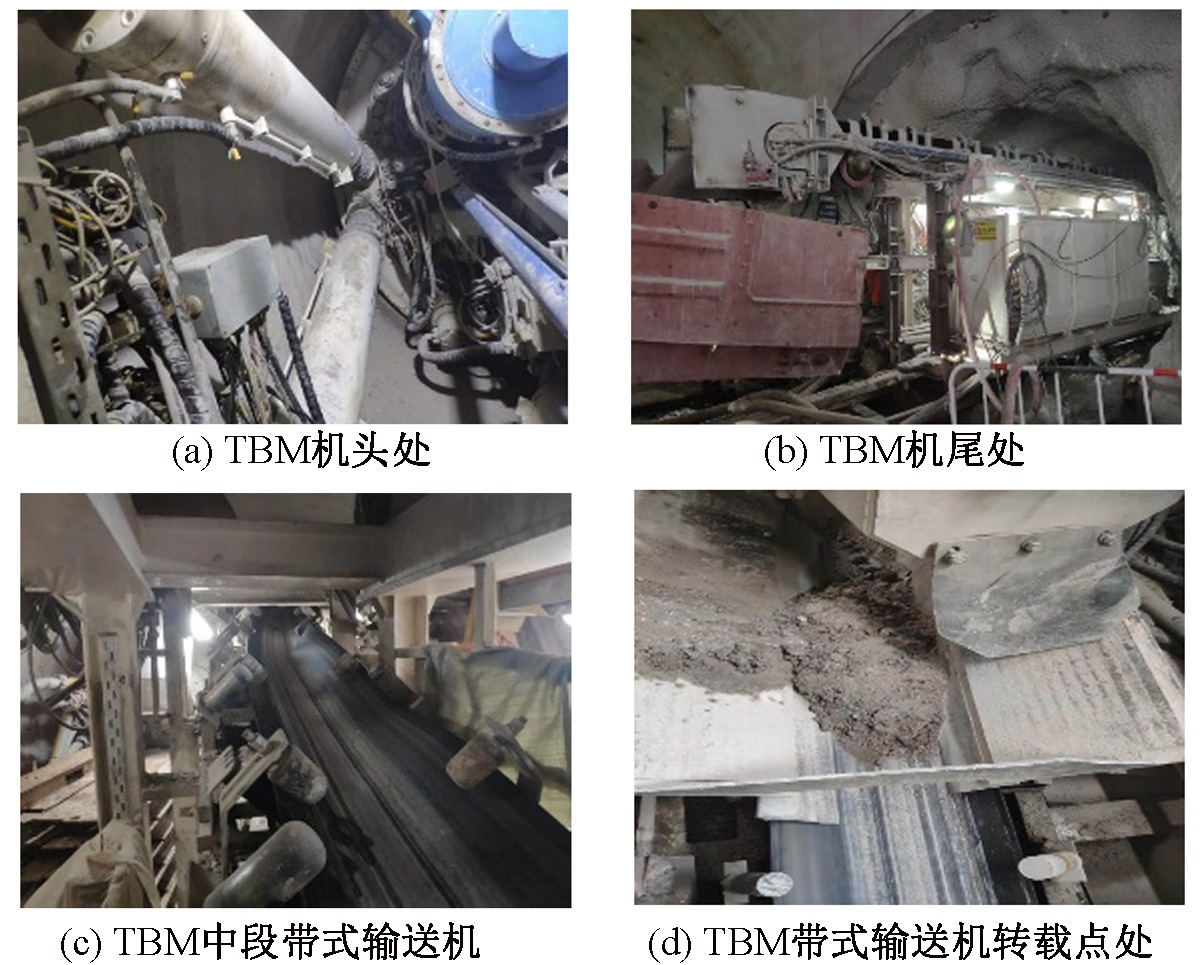| [1] |
张博庭. 如何兑现减排承诺:我国首次实现碳达峰的启示[J]. 水电与新能源, 2021, 35(3):1-6.
|
|
ZHANG Boting. How to fulfill the carbon emission reduction commitment:enlightenment of the first carbon emission peaking in China[J]. Hydropower and New Energy, 2021, 35(3):1-6.
|
| [2] |
彭才德. “十三五”水电发展及展望[J]. 中国电力企业管理, 2019(4):34-36.
|
|
PENG Caide. Development and prospect of hydropower in the 13th Five-Year plan[J]. China Power Enterprise Management, 2019(4):34-36.
|
| [3] |
路振刚, 王建华, 朱安平, 等. 适用于超小转弯半径的紧凑型TBM设计关键技术研究及应用:以山东文登抽水蓄能电站排水廊道隧洞工程为例[J]. 隧道建设:中英文, 2021, 41(6):1047-1 057.
|
|
LU Zhengang, WANG Jianhua, ZHU Anping, et al. Design and application of a compact TBM for an ultrasmall turning radius: a case study on a drainage gallery tunnel project of Wendeng pumped storage power station in Shandong, China[J]. Tunnel Construction, 2021, 41(6):1047-1 057.
|
| [4] |
李宗平, 王帅帅, 毛锦波, 等. 天山胜利隧道施工关键技术创新与应用[J]. 现代隧道技术, 2024, 61(2):241-253,271.
|
|
LI Zongping, WANG Shuaishuai, MAO Jinbo, et al. Key technological innovation and application in the construction of tianshan shengli tunnel[J]. Modern Tunnelling Technology, 2024, 61(2):241-253,271.
|
| [5] |
LIU Qiang, NIE Wen, HUA Yun, et al. Long-duct forced and short-duct exhaust ventilation system in tunnels formation and dust control analysis of pressure ventilation air curtain[J]. Process Safety and Environmental Protection, 2019,132:367-377.
|
| [6] |
王晓玲, 禹旺, 刘长欣, 等. 考虑围岩传热的深埋引水隧洞TBM施工通风模拟[J]. 水力发电学报, 2019, 38(10):1-13.
|
|
WANG Xiaoling, YU Wang, LIU Changxin, et al. TBM construction ventilation simulation for deep buried headrace tunnels considering heat transfer in surrounding rock[J]. Journal of Hydroelectric Power, 2019, 38(10):1-13.
|
| [7] |
WANG Hao, NIE Wen, CHENG Weimin, et al. Effects of air volume ratio parameters on air curtain dust suppression in a rock tunnel's fully-mechanized working face[J]. Advanced Powder Technology, 2018, 29(2):230-244.
|
| [8] |
赵宁雨, 吕陈伏, 陈弘杨, 等. 高海拔长大隧道压入式施工通风的合理长度研究[J]. 重庆交通大学学报: 自然科学版, 2020, 39(3):94-99.
|
|
ZHAO Ningyu, LYU Chenfu, CHEN Hongyang, et al. Optimal length of forced ventilation in construction of long tunnel at high altitude[J]. Journal of Chongqing Jiaotong University:Science Edition, 2020, 39(3):94-99.
|
| [9] |
龚晓燕, 童丹丹, 樊江江, 等. 综掘面风流调控下粉尘双目标优化研究[J]. 中国安全科学学报, 2022, 32(4):44-50.
doi: 10.16265/j.cnki.issn1003-3033.2022.04.007
|
|
GONG Xiaoyan, TONG Dandan, FAN Jiangjiang, et al. Study on dual-objective optimization of dust under airflow regulationin fully mechanized faces[J]. China Safety Science Journal, 2022, 32(4):44-50.
doi: 10.16265/j.cnki.issn1003-3033.2022.04.007
|
| [10] |
TORANO J, MENENDEZ M, et al. Auxiliary ventilationin mining roadways driven with roadheaders:validated CFD model-ling of dust behaviour[J]. Tunnelling and Underground Space Tech-nology, 2011, 26(1):201-210.
|
| [11] |
蒋仲安, 杨斌, 张国梁, 等. 高原矿井掘进工作面截割粉尘污染效应及通风控尘参数分析[J]. 煤炭学报, 2021, 46(7): 2 146-2 157.
|
|
JIANG Zhongan, YANG Bin, ZHANG Guoliang, et al. Analysis of dust pollution effect of cutting dust and ventilation control parameters at the heading face in plateau mines[J]. Journal of China Coal Society, 2021, 46(7): 2 146-2 157.
|
| [12] |
荆德吉, 魏德宁, 马明星, 等. 胶带运输巷粉尘运移及气动喷雾降尘技术[J]. 中国安全科学学报, 2021, 31(11):93-99.
doi: 10.16265/j.cnki.issn 1003-3033.2021.11.013
|
|
JING Deji, WEI Dening, MA Mingxing, et al. Study on dust movement in belt transportation roadway and pneumatic spray dust control technology[J]. China Safety Science Journal, 2021, 31(11):93-99.
doi: 10.16265/j.cnki.issn 1003-3033.2021.11.013
|
| [13] |
VREMAN B, GEURTS J B, DEEN G N, et al. Two and four way coupled euler-lagrangian large-eddy simulation of turbulent particle-laden channel flow[J]. Flow, Turbulence and Combustion, 2008, 82(1):47-71.
|
| [14] |
朵生君. 中天山隧道TBM长距离施工通风方案研究[J]. 隧道建设, 2013, 33(5):419-422.
|
|
DUO Shengjun. Case study on long-distance ventilation of Zhongtianshan tunnel driven by TBM[J]. Tunnel Construction, 2013, 33(5):419-422.
|
| [15] |
LIU Qiang, NIE Wen, HUA Yun, et al. Study on airflow migration and rock dust pollution behavior in TBM construction tunnel[J]. Arabian Journal for Science and Engineering, 2020(45):1-17.
|
| [16] |
LIU Ning, CHEN Kun, JIANG Piao, et al. Research on dust migration law and dust reduction efficiency in the operation process of tunnel boring machine[J]. KSCE Journal of Civil Engineering, 2022, 26(3): 1 419-1 427.
|
| [17] |
徐海. 敞开式TBM施工隧道粉尘扩散及除尘系统研究[J]. 中国安全生产科学技术, 2019, 15(6):179-185.
|
|
XU Hai. Study on dust diffusion and dust removal system of open-type TBM construction tunne[J]. Journal of Safety Science and Technology, 2019, 15(6):179-185.
|
| [18] |
CHAKROUN W, ALOTAIBI S, HABCHI C, et al. Comparison of removal effectiveness of mixed versus displacement ventilation during vacuuming session[J]. Building and Environment, 2019,155:118-126.
|
| [19] |
ZHOU Binghua, XUE Yiguo, LI Mingtian, et al. Longitudinal jet ventilation calculation and application of long highway tunnel[J]. Journal of Engineering, Design and Technology, 2018, 16(2):256-269.
|





























